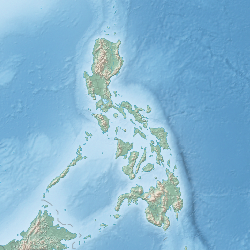History
Established in 1936, [1] it was renamed in honor of Colonel Melchor dela Cruz, who was killed after his helicopter was shot down by the communist New People's Army over San Mariano, Isabela during reconnaissance operations against the rebel group on 8 November 1971. It is currently the headquarters of the 5th Infantry Division of the Philippine Army. [2]
On May 23, 2011, the camp's re-enlistment office was damaged by two explosions, which authorities believed were perpetrated by rejected applicants for the army. [3]
In 2023, the camp was selected as one of four strategic military bases in the Philippines that were opened to the US military as part of the Enhanced Defense Cooperation Agreement, citing the base's proximity to Taiwan. [4]
On October 10, 2024, three people were killed in a mass shooting perpetrated by a soldier inside the camp that was believed to have been part of a domestic dispute. [5]
This page is based on this
Wikipedia article Text is available under the
CC BY-SA 4.0 license; additional terms may apply.
Images, videos and audio are available under their respective licenses.


